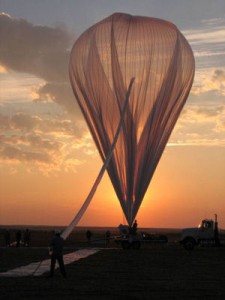TUESDAY, 4 JANUARY 2011
The Cosmic Ray Energetics And Mass (CREAM VI) balloon, designed by scientists at the University of Maryland, is currently floating in near space, 126,000ft above Antarctica, to gather data on high-energy cosmic rays that reach Earth. Other balloons in the launch campaign have been designed to study X-rays produced by precipitating radiation belt electrons and the effects of magnetic fields on star formation.The steady stratospheric winds that circumnavigate Antarctica allow the balloons to be recovered from locations close to the launch site, and ensure a flight path almost entirely above land. During the Antarctic summer the balloons are continuously illuminated by the sun, so are less vulnerable to the daily thermal cycles that cause balloons to rise and fall, limiting their flight times. The current missions are primarily testing prototype hardware and launch procedures and are part of a larger NASA campaign carried out through the US Antarctic program, which has had a permanent presence on the continent since 1956.
Written by Robert Jones

